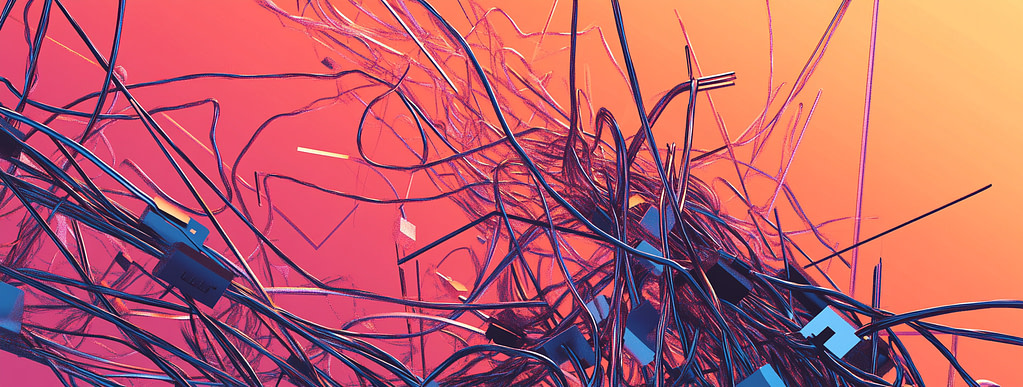The Ultimate Guide to RAG Evaluation: 10 Things You Must Know

If you are in the process of improving your RAG pipeline then give this guide a good look. We bring you 10 things you must know when conducting RAG evaluations. So, let’s get into this.
1. Dirty Data Complicates Results
RAG pipelines are a sophisticated data processing system. They are designed to convert unstructured data into a structured format. This effort is made to help AI models understand, this data. However, sophisticated techniques in the retriever and generator won’t be useful if the data is dirty.
2. Vectorization is vital
The core of the RAG pipeline is the vectorization process. This is where processed data is converted into vector indexes. These vectors represent the data in a structured form. AI models can query and understand this form. This makes them crucial for the pipeline’s success.

If you vectorize your data efficiently you will be able to store all the meaning in your unstructured data. This preservation is vital to retain the richness of unstructured data. That very richness is the sole reason for businesses to invest in RAG pipelines. Without vectors, you lose it. However, be mindful of vectors that take up too much space. It is now possible to reduce the dynamic load of vectors while preserving the meaning. The compression will help you maximize the value of your data without paying too much for storing it.
3. Data Retrieval
The data retrieval process must be optimized to retrieve the correct data sets in order to build insights. The challenge here lies in efficiently navigating vast data landscapes to find the most valuable data. For this, you will need advanced algorithms and strong indexing. If indexing capabilities are weak you will lose a lot of time, processing efforts, and resources. However, advanced algorithms will help you index data efficiently and retrieve it with ease.
4. Insight Generation
Once the data is retrieved, the next step is processing in a way that answers the user’s query. In order to do this the system must process the data in a language the user understands. It also must do so in a way that properly and fully answers their query. So the insight generator must be prepared to process the data in light of the question asked. It must also have language abilities that convey the insight in an understandable form. Both of these aspects of the generator can use optimization in many cases.
Even if your RAG pipeline is able to convey the message in natural language, it is possible to optimize its delivery. Similarly, the answer of the query must be based on the most integral message in the data and the query. Optimizing your algorithms and processing techniques can help bring more valuable results.
5. Scalability Defines the Future of Efficient RAG
Designing your RAG pipeline with scalability in mind is vital. Even it is performing well in the beginning it can crumble as the system grows. This is why choosing scalable technologies and architectures is essential.
As an AI application grows, so does its data needs. A scalable RAG pipeline can handle increasing volumes of unstructured data. It can take the extra load without compromising performance. For this you need to make sure your RAG pipeline can withstanding the building pressure. Choose designs that can accommodate increasing data volumes and complexity.

In order to ensure that your AI system remains effective over time test it with complex queries and new test datasets. In addition to this, it also tracks its performance and data load. See how it behaves, monitor changes, and as patterns emerge take action to prevent loss.
6. Schedule Continuous Monitoring and Optimization
Regularly monitoring the performance of your RAG pipeline will show you areas that need improvement. You can optimize the components of the pipeline to help maintain peak efficiency. Efforts can be made to correct errors, train your AI, and enhance the capabilities of the model. Regular monitoring should be in place even when the application’s performance is surpassing. Your goal should be identifying bottlenecks or inefficiencies early on. You can make targeted improvements to enhance overall performance.
7. Feedback Mechanisms Save Energy
Integrating feedback mechanisms into your RAG pipeline allows for continuous learning and improvement. By collecting feedback from AI model outputs and user interactions and using it you can automate improvements. You can refine the pipeline’s processes by using that feedback. The pipeline will enhance its ability to generate relevant and accurate results. This will reduce its dependency on you and extrude benefits out of user feedback as well.

8. Utilizing Advanced Machine Learning Techniques
Exploring advanced machine learning techniques can give your AI system a competitive edge. Technologies such as deep learning and reinforcement learning can come in handy. These techniques can help improve different aspects of your pipeline. You can use them to improve data processing, vectorization accuracy, and response quality.
9. Latency Reduction Has a Monumental Impact
Aiming to reduce latency in the response delivery is not an easy target. It is sometimes neglected though. The impact of a delayed response on the users is much more negative than the positive effect of a comprehensive response. So it would be best if you worked towards reducing latency in the insight generation process. For this, use parallel processing or consider model optimization. You can also incorporate caching mechanisms that will help in the case of repeat users and repeat queries.
10. Make The Generator Contextually Aware
Even with the right language processing tools your generator could be struggling with producing contextually aware answers. In order to produce insights that fulfill the context the query is asked in, try contextual embeddings. You can also experiment with memory mechanisms and fine-tuning to get the best case-specific answers.
RAG pipelines can be optimized in thousands of ways. You could implement dozens of new technologies, and try hundreds of new things but the most impact you will drive will come from touching up the basics. So, start with these 10 and then go from there. RAG pipelines can be a gift that keeps giving, but you need to prioritize the areas that need the most attention. Only then you can look at cosmetic improvements.